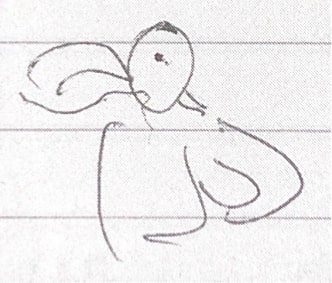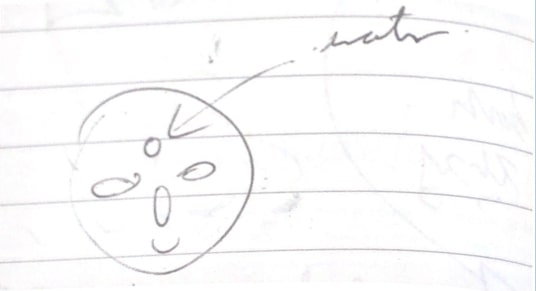On Don Mee Choi’s “Wings of Return” and Ethical Postmemory Poetics
In Don Mee Choi’s DMZ Colony, “Wings of Return” is the result of Choi’s visit to a “DMZ village”—a settlement in the Civilian Control Zone on the South Korean side of the DMZ—where she met Ahn Hak-sŏp. Mr. Ahn was a political prisoner from 1953 to 1995 and “remains a North Korean sympathizer.” [1] What proceeds from their encounter is a composite of translations of Mr. Ahn’s testimonial accounts, various drawings Choi drew during her visit with him, and Choi’s own poetic interventions. This section reads as an inventive account of the witness testimony that took place between Choi and Mr. Ahn in 2016, and I am examining Choi as a secondary witness to Mr. Ahn’s testimony. Dominick LaCapra describes a secondary witness as someone who becomes a witness herself by bearing witness to the victim’s trauma. However, LaCapra questions how much access the secondary witness has, and draws attention to the fine line between identification and distance with the victim. Although the secondary witness listens to and bonds with the victim, the secondary witness does not take on the identity of the victim nor has the same experiences, and this is directly tied to the secondary witness’ method of representation. In this section, Choi palpably negotiates and grapples with the issue of identification with and distancing herself from Mr. Ahn. Her method of representation is through a postmemory poetics rather than a straightforward testimonial account. In doing so, Choi maintains an ethical distance between her and Mr. Ahn as she engages in a process of “empathic unsettlement.” This distance then allows new opportunities of interpretation and intervention. Together, I am calling this an example of “ethical postmemory poetics” where Choi creates a space of aesthetic and ethical distancing that generates new modes of interpretation and intervention.
Concerned with the memory of the Korean War and how certain narratives have been obscured and forgotten, Choi’s translation and retelling of Mr. Ahn’s horrific experiences first and foremost allow his experiences to be heard and work to combat official narratives that have relegated his experiences to the margins. “Wings of Return” is split into five different subsections numbered Ahn Hak-sŏp #1 - #5. Because these are not her experiences, Choi’s rendering of Mr. Ahn’s experiences take the form of an ethical postmemory poetics that leaves space between them. Mr. Ahn’s translated testimony accounts are rendered in bold and written in the first-person perspective. For instance, Choi writes in Ahn Hak-sŏp #1:
… we were deprived of many rights … no visitation, no letters, no medical care … we were each given a blanket to sleep on … this is going to sound like a lie … in the morning when we shook the blankets to fold them the dust from the blankets was so thick that it looked as if smoke was coming out of the room … that’s why we had to keep the door closed … when the dust settled it was about 2 millimeters thick … I know it sounds like a lie … I was going to die one way or the other … from the beatings or from getting sick … I decided that I wanted to be able to move my body before I died … I opened the door … the entire prison was on alert … the guards thought there was a fire … I admitted that I was the one who opened the door … I won’t say what they did to me … I’ll leave it up to your imagination … [2]
Choi’s rendering of Mr. Ahn’s story in first person already depicts translation as a form of active listening and bonding. If empathy is often described as placing oneself in another’s shoes, Choi literally assumes the position of Mr. Ahn and writes from his perspective. Seo-Young Chu describes this as a form of “postmemory han” called “the secondary first person” in which “the speaker uses the grammatical first person to recount the experiences of her forebears.” [3] However, Choi complicates the secondary first person by including ellipses as spaces of distance. Rather than experiencing postmemory as a one-to-one correspondence, Choi depicts postmemory as an active process that involves an ethical negotiation. LaCapra argues that empathic unsettlement involves composing narratives that “neither confuse one’s own voice with the victim’s.” [4] Empathy, then, is placing oneself in another’s shoes while also recognizing the distance and differences between each individual’s experience. Choi’s inclusion of ellipses maintains an ethical distance between her and Mr. Ahn—she draws attention to the fact that she does not have full access to his experiences. However, when Mr. Ahn says, “I won’t say what they did to me … I’ll leave it up to your imagination …” he invites Choi to use her imagination as a different form of listening. These gaps open space for Choi’s own interpretations and interventions.
Whereas Ahn Hak-sŏp #1 is relatively straightforward with Choi’s translations of Mr. Ahn’s testimony in the secondary first person, the succeeding testimony sections are more complex as Choi intervenes in the narrative more explicitly. I’ve shown how the ellipses maintain an ethical distance between Mr. Ahn and Choi. This distance then opens up space for interpretation and intervention in which Choi’s drawings and poetry represent her own postmemory experiences. Ahn Hak-sŏp #2 describes the aftermath of a hunger strike Mr. Ahn took part in while he was held in prison and includes one of Choi’s drawings:
… all the prisons nationwide … but they kept the pressure on … torture … indiscriminate beatings … for instance … if you dropped your chopsticks or rice bowl … What’s that signal? … What’s that code? … they beat the shit out of us … they demanded meaning … yet meaningless … it was impossibly absurd … for instance … if you accidentally dropped your wooden pillow at night … You signaled! … this comrade of mine was too frail … I said I was the one … these guys still used the Japanese word for a shotgun … my arms were not long enough … for a loop … for a shotgun to be tied … so they did it this way … [5]
Initially, there may be an impulse to interpret the inclusion of Choi’s drawing as a way she intervenes and fills in the ellipses of Mr. Ahn’s narrative. However, by looking at Choi’s interventions as examples of her own postmemory experiences, I am suggesting that this drawing is Choi’s interpretation of Mr. Ahn’s experiences. In other words, this drawing says more about Choi’s position as a secondary witness than it accurately portrays Mr. Ahn’s experiences.
One of the most striking moments in “Wings of Return” is when we see how Choi’s own emotional response to hearing Mr. Ahn’s memories furthers the narrative. In Ahn Hak-sŏp #4, Mr. Ahn describes how he endured water torture twice for “refus[ing] to change his political view”:
I endured water torture twice … I still didn’t budge … in winter the guards opened all the windows and doors of my cell and sprayed water … I was stripped … the cell turned into a freezer … I could endure the cold for 6 days … I squatted … jumped to keep warm … I was exhausted in the morning … without food … on day 7 I leaned against the ice wall and passed out … I heard a siren …
then I heard the vowels from my own mouth
O E
A E
I E
E E E
이 이 이
my face
browless
earless
my eyes
my nose
my mouth
moonless
my comet [6]
Marianne Hirsch describes postmemory as stories or experiences that “were transmitted to them so deeply and affectively as to seem to constitute memories in their own right.” [7] Hirsch emphasizes the significance of the affective and emotional response elicited. When Choi transitions from Mr. Ahn’s secondary first person testimony in bold to her own first person poetics—“then I heard the vowels from my own mouth”—Mr. Ahn’s memories become hers. Her own affective response in experiencing his memories physically causes her to speak out loud. In doing so, her emotional response furthers the narrative—his suffering causes her to suffer and materially manifests on the page. The drawing of the figure who is about to go through water torture becomes Choi’s way of inhabiting Mr. Ahn’s experiences. This is made explicitly clear when she writes, “my face / browless / my eyes / my nose / my mouth.” As a secondary witness, Choi’s process of empathic unsettlement not only distinguishes her voice from Mr. Ahn’s, but Choi suggests that the act of witnessing can be a generative one—the witness’s own emotional response matters and has the ability to contribute something new.
Notes
[1] Don Mee Choi, DMZ Colony (Seattle: Wave Books, 2020), 19.
[2] Ibid., 22.
[3] Seo-Young Chu, “Postmemory Han,” in Do Metaphors Dream of Literal Sleep?: A Science-Fictional Theory of Representation (Boston: Harvard UP, 2011), 210.
[4] Dominick LaCapra, “Trauma, Absence, Loss,” in Critical Inquiry 25, no. 4 (1999): 723.
[5] Choi, DMZ, 24.
[6] Ibid., 32-33.
[7] Marianne Hirsch, The Generation of Postmemory: Writing and Visual Culture After the Holocaust (New York: Columbia UP, 2012), 5.




